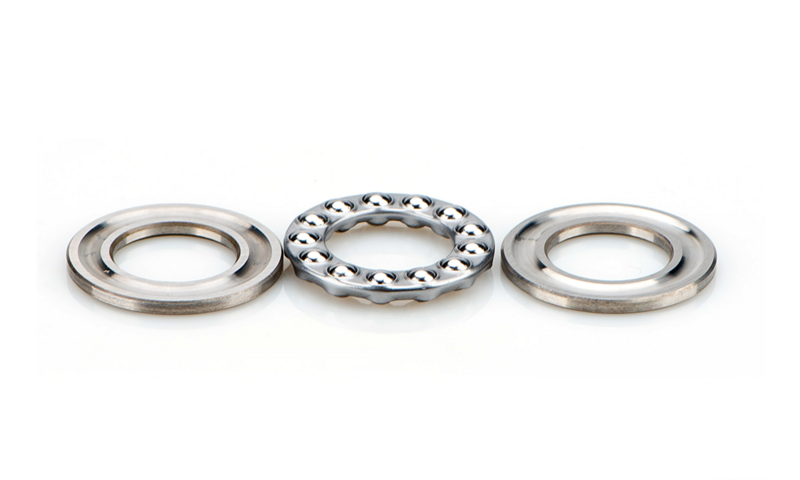Need Support?
Please provide your question. We’ll find you with the best support options.
ISK Bearings | B2B Bearing Wholesale
Table of content
1. How do I correctly install a thrust ball bearing step by step?
2. What are the guidelines for installing thrust ball bearings?
3. What are the common mistakes when installing thrust ball bearings?
4. What should I be careful about when installing thrust ball bearings?
5. What is the key takeaway about installing thrust ball bearings?
Thrust ball bearing is a type of rolling bearing designed to handle axial loads, allowing the shaft to rotate or move in one direction while preventing motion in the opposite direction. It consists of three main components: the shaft washer, the housing washer, and the ball-and-cage assembly.
The usual steps for installing a thrust ball bearing are as follows: First, install the housing washer, then place the cage with steel ball assembly on top, and finally add the shaft washer. The shaft washer secures the shaft's axis and allows it to rotate. Detailed steps with Below are the detailed steps with illustrated demonstrations.

Prepare a set of thrust ball bearing components, including the housing washer, shaft washer, and the ball-and-cage assembly.

Place the housing washer/shaft washer near the fixed component (in practical applications, this part is positioned close to the fixed location), as shown in the picture right.

Install the cage with steel ball assembly above the housing washer (or shaft washer).

Add the shaft washer (or housing washer), as shown in the picture right.

A fully assembled thrust ball bearing is shown in the left picture.
The fitting of thrust ball bearings with the axis is generally transitional, and the fitting of the ring with the bearing bore is a clearance fit. Therefore, this type of bearing is easier to install.
In general, the axis rotates. Therefore, the fit between the inner ring and the shaft is a interference fit, while the fit between the outer ring and the bearing seat is a clearance fit.
Thrust ball bearings primarily bear axial loads during operation. Despite the relatively simple installation process, errors can occur during actual repairs. The most common error is incorrectly installing the housing washer and the shaft washer, which renders the bearing useless and accelerates wear-out of the bearing journal.
Learn more: Axial Bearings: Principles of Operation, Applications, and Selection 
In an incorrect example, if the inner diameter of the shaft washer is in a transition fit with the shaft journal, rotation of the shaft can cause the shaft washer to move, resulting in friction on the stationary end face. When subjected to axial force (Fx), the friction torque may exceed the resistance torque of the inner diameter fit, forcing the shaft washer to rotate and exacerbating wear on the shaft journal.
Correct Example
Incorrect Example
(1). Distinguish between the bearing's housing washer and shaft washer.
(2). Identify the stationary part of the mechanical assembly (the non-moving part).
(3). In all situations, the housing washer of the bearing should be snug against the surface of the stationary part.
You have now completed the entire guide on thrust ball bearing installation. If you still have any questions regarding the installation process, please feel free to contact us. The ISK BEARINGS consulting team will be happy to assist you in resolving any issues.
Bearing model numbers consist of three parts:
We previously helped an electromechanical equipment manufacturer in Asia resolve abnormal bearing noise issues. By optimizing the sealing structure and adjusting lubrication parameters, we significantly improved system stability and reduced maintenance costs.
Case reference: ISK BEARING Customer Cases
We offer a range of testing and technical services, including independent heat treatment, automated noise & vibration testing, clearance inspection, salt spray testing, and more — helping our clients improve product reliability and performance.
Resource overview: ISK Technical Resources
You can visit the ISK official FAQ section to explore answers related to bearing selection, product specifications, and more.
FAQ Section: ISK Bearings FAQ Center
Discover more about the features and applications of various bearings.
Click here to explore more articles and find the perfect bearing for your project.
Needle Bearings (Roller Bearings) are a type of bearing that performs exceptionally well at high speeds. Their rollers are precisely guided by specially shaped, high-rigidity cages with minimal dimensional error. Despite their small cross-section, needle bearings...
How Do Ball Bearings Work? Bearings are often small and unassuming components in a product, yet they are crucial for its proper functioning. Without bearings, many products would fail to operate effectively. But do you know how ball bearings...
Please provide your question. We’ll find you with the best support options.